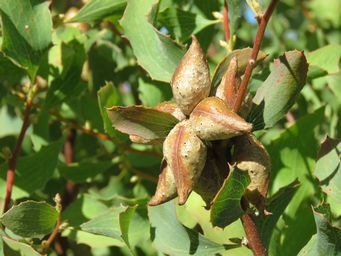Australia So Much to See




Hakea subsulcata
Small white or pale pink clusters of Hakea flowers along the stems of this large shrub. Leaves are
elongated and narrow.
August
Kulin, Wheatbelt Region, Western Australia and is found in the southern part of the Wheatbelt, and adjacent areas of the Great Southern and Goldfields Regions



Seen here with flowers commencing opening in July, and flowers between July and October. Photo top left taken earlier to show foliage.
Bridgetown, South West Region, Western Australia and occurs throughout the Wheatbelt and Great Southern regions, extending into the South West region.



Hakea ruscifolia, Candle Hakea
White Hakea flowers along stems, which can coat the stem tips giving an overall candle shape from which
it takes its name. Leaves are elliptical, with a spine at the centre of the rounded tip of leaf.
March
Albany, Great Southern Region, Western Australia and occurs in the coastal strip from Jurien Bay to Esperance, extending inland into parts of the Wheatbelt near Perth, the South West and lower Great Southern regions. Only limited occurrences between Albany and Esperance

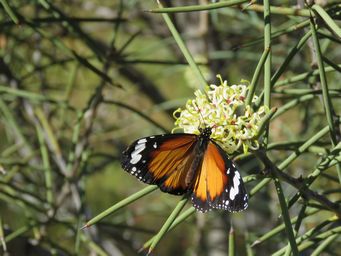
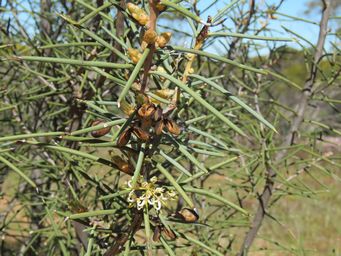
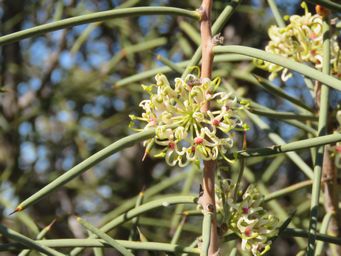
Hakea recurva subsp. recurva with the one lower right being subsp. arida, Djarnokmur, Djarnokmurd which means Stand Back so sometimes
called Standback tree, or Jarnockmert, Wait-a-while (both of which are also used for other native shrubs).
Cream to yellow flowers
on a tall shrub which can reach to six metres in height. Foliage consists of long narrow cylindrical leaves that are slightly
curved, and terminate in a sharp spine. Seed cones are smooth and an elongated egg shape, with no obvious beak (horn).
August
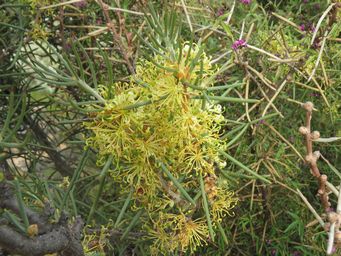
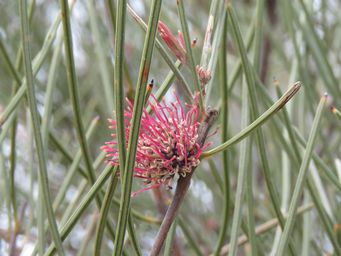
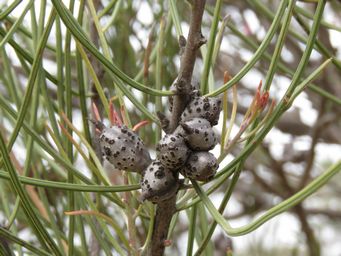
Hakea scoparia subsp. scoparia, Kangaroo Bush, Needle Bush, Broom Hakea (other native plants also share these common names), Taanttyin.
Cream or pink flowers which deepen in colour to deep pink or red as they age. An open shrub which can reach three metres in
height. Seed cones are oval to a thick sometimes curved beak tapering to a point, and cones have wart-like bumps on the surface.
August, towards the end of its winter flowering season.
